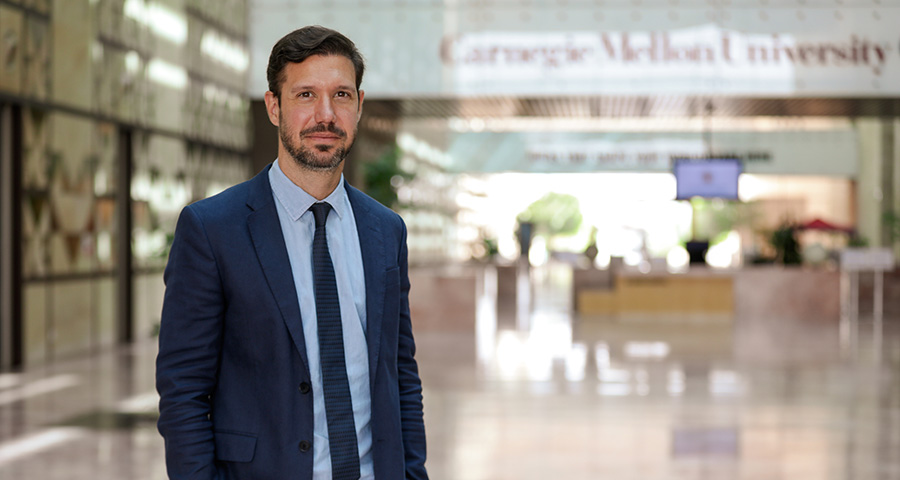
In the news: Agustín Indaco provides perspective on post-World Cup economy
Originally published in The Peninsula as “Qatar’s economy expected to grow at 2.4% in 2023: Expert”
By Fazeena Saleem
Tourism and finance sectors are more likely to show a growth post World Cup, said Agustín Indaco, an assistant teaching professor of economics at Carnegie Mellon University Qatar, and a researcher in the field of sports analytics.
While it is hard to draw parallels with previous experiences in the world, there are a few clear indicators of what to expect of Qatar’s economy after the 2022 World Cup, he said.
“A group of students at CMU-Q studied this for countries and cities that hosted the FIFA World Cup and the Olympics in the last 40 years and found that host countries did not grow at a higher rate relative to a comparison group in the years after the event took place,” Indaco said while talking to The Peninsula.
He said that while the overall economy might not show signs of abnormal growth, there is evidence that certain sectors such as tourism do see a positive effect from hosting such high-profiled events.
“Research shows that, on average, tourism increases by roughly 8% the year the event takes place. But more interestingly, there seems to be certain inertia in tourism flows that are still present in the following years. More importantly for Qatar, research shows that this effect is stronger in countries that did not have a relatively large influx of tourism before the event. This is the case of Qatar. While tourism has grown significantly and is a strong pillar in the country’s 2030 National Vision, pre-COVID data shows that the tourism sector represents roughly 3% of the country’s GDP compared to 10% at the global level,” said Indaco.
“If we take 2022’s fourth quarter data as an indication of what is to come, we should be expecting a healthy dose of tourism flowing to Qatar in the coming years. Official statistics show that the 2022 World Cup might be an outlier when it comes to the draw of tourism generated by the event. For example, accommodation and food service activity grew by an astonishing 64% year-over-year in real terms in the fourth quarter of 2022. It will be interesting to monitor the figures for the first quarter of 2023 to see how much of this effect has endured after the World Cup,” he added.
According to Indaco, another sector that naturally sees a boost in activity, especially in the lead-up to a major sporting event, is the construction sector.
“In the case of Qatar, in 2021 alone, the sector grew by roughly 20% in real terms. The infrastructure projects developed in preparation for the event create jobs in the short-term. But more importantly, they leave a lasting imprint of housing, transportation, roads and other infrastructure projects that then have positive spillovers in the economy that are hard to quantify,” he said.
“Naturally, hosting these events does not come without its risks. One area of concern is that many of the short-term jobs created (in construction, but also in service to accommodate the larger influx of tourists and fans) might lead to a bubble that is then hard to descale in an orderly manner. While this has been a large problem for other host-countries in the past, the case of Qatar might be slightly different given its low unemployment rate and the fact that it is an economy that continues to grow and generate new employment opportunities at high rates,” he added.
Indaco said that at the moment, there is a general concern that Qatar’s economy has slowed down after the World Cup.
“Nonetheless, the economy is still expected to grow by roughly 2.4% in 2023, which is above its pre-World Cup levels. Given that international gas prices are significantly lower in 2023 compared to 2022 and without the boost of World Cup related economic activity, this is a positive indication that the country is successfully achieving its mission of building a more diversified economy. In particular, the financial services and construction sectors are showing strong numbers and no signs of slowing down,” he added.
